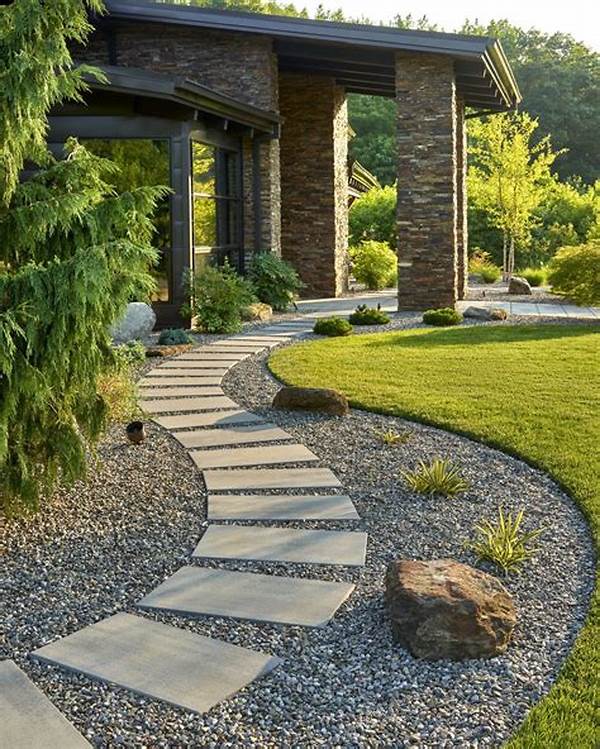- How to Make Walkways in Small Homes Feel Open
- Using Lighting to Your Advantage
- Purposeful Furniture Arrangement
- Color Theory and Walkway Design
- The Role of Texture in Open Space Design
- Top 10 Topics on How to Make Walkways in Small Homes Feel Open
- Enhancing the Journey Through Walkways
- Illustrating Open Walkways
How to Make Walkways in Small Homes Feel Open
We’ve all been there—walking through a small home and feeling a bit cramped or closed in. But what if there was a strategy, a magical way on how to make walkways in small homes feel open and inviting? Today, we’re diving into the world of small space design, where creativity meets functionality.
Read More : Space Saving Hacks That Don’t Sacrifice Aesthetics
Think of your home as a blank canvas. When it comes to walkways, the first step to creating openness is decluttering. Say goodbye to that old shoe rack that’s never really fit, or those decorative items that, although charming, only seem to close the space more. Every piece of furniture or decor has a story, but consider for a moment that every item should earn its place. The goal is to create a visual flow, a seamless transition from one room to another, almost like a gentle river that encourages you to move effortlessly through the space.
Now, let’s add a touch of color to this canvas. Light and neutral colors can work wonders in a small space, reflecting light and creating an airy feel. If you’re up for it, mirrors not only serve as aesthetic pieces but can significantly add depth, doubling the light, and giving the illusion of a larger space. How to make walkways in small homes feel open, you ask? Well, it’s a cocktail of clever design choices that subtly invite you in and lead you around without making you feel like you’re in a maze. Remember, it’s all about creating that flow; imagine someone else walking through and thinking, “Wow, this feels bigger than it looks!”
Using Lighting to Your Advantage
Lighting is often the unsung hero in the quest for making small walkways feel open and inviting. It’s not just about functionality; it’s the ambiance, the allure, the open invitation that guides one from one area to another without a fuss. By strategically positioning light sources, whether through floor lamps, wall sconces, or LED strips hidden under shelves, you can transform a narrow path into a charming corridor that whispers, “Welcome.”
—
Purposeful Furniture Arrangement
Now, let’s dive deeper into the art of furniture arrangement. It’s not just about moving things around until something fits; it’s about consciously curating the space to serve its purpose without overpowering the room. Let’s take a closer look at how to make walkways in small homes feel open using furniture arrangement.
In small spaces, multifunctional furniture can be your best friend. Think sofas with concealed storage or a fold-out desk that disappears when not in use. The less clutter you see, the more open your space will feel. It’s about finding that balance between comfort and practicality while letting the room breathe. Imagine a situation where your guests walk in and their eyes naturally follow the path created by the smart arrangement, leading them through the home as if on a guided tour.
Color Theory and Walkway Design
Harness the power of color theory to further expand those walkways visually. Light colors such as whites, creams, and pastels can open up a space, making it look more expansive. Consider also incorporating vertical lines through wallpaper or artwork to draw the eye upward, giving the illusion of higher ceilings and therefore, a more spacious area. It’s a tiny touch, yet powerful, in your quest to learn how to make walkways in small homes feel open.
Complimentary colors can create harmony in your space, so choose tones that amplify the natural light. A burst of color through a strategically placed plant or art piece can have a dramatic effect, drawing the eye and reinforcing the openness of the layout. It’s all about playful experimentation until you find that perfect balance that makes your walkway a joy to traverse.
The Role of Texture in Open Space Design
Think about texture, too, when working on how to make walkways in small homes feel open. Smooth, reflective surfaces such as glass, metal, and polished wood can contrast beautifully with plush textiles like rugs and cushions, adding depth and interest to the walkway without making it feel crowded.
Incorporate textures that echo the natural elements, bringing the outside in. A jute rug here, a woven basket there; these add warmth and character, drawing people in while still maintaining that cherished open, airy feeling. Consider layering these textures, creating a sense of luxury and depth that catches the eye and opens the heart to the magic of your small home.
Top 10 Topics on How to Make Walkways in Small Homes Feel Open
Enhancing the Journey Through Walkways
The journey to creating open walkways starts with understanding space management. Declutter and organize, combining aesthetic with function to promote an open flow. Lighting, color, and texture are powerful allies in transforming how you perceive your home. With these elements, your small home’s pathways won’t just be passages; they’ll be experiences in spatial elegance. Imagine walking through your home and feeling it transform, knowing that these simple changes have brought not just lightness but a sense of luxury that resonates with everyone who enters.
Marrying these practical tips with creativity transforms small spaces from cramped to expansive, making your walkway feel more welcome and inviting. It becomes not just an area to walk through—but a feature that enhances the home. It might sound like magic, but it’s just smart design, making your home not only livable but lovable.
—
Illustrating Open Walkways
Key Illustrations:
Creating an open walkway doesn’t demand grand spaces; it craves ingenuity. Think of clean, minimalist design where less means more. Every piece of furniture or decor should contribute to the light and flow. Imagine spotlights placed strategically to highlight points of interest and natural light maximized through strategic curtain choices.
Color also plays a pivotal role. Light shades push the boundaries outward, visually expanding tight spaces. And when it comes to furniture, why not play the magician and fold away anything that might intrude into the space? It’s about finding harmony between design and functionality that not only delights the eye but revitalizes the spirit of a small home.
By threading these elements together—be it through strategic mirror placement, clever use of textures, or thoughtful lighting—you’re not just designing a space; you’re orchestrating an experience. How to make walkways in small homes feel open becomes no longer just a challenge but an attainable reality.


